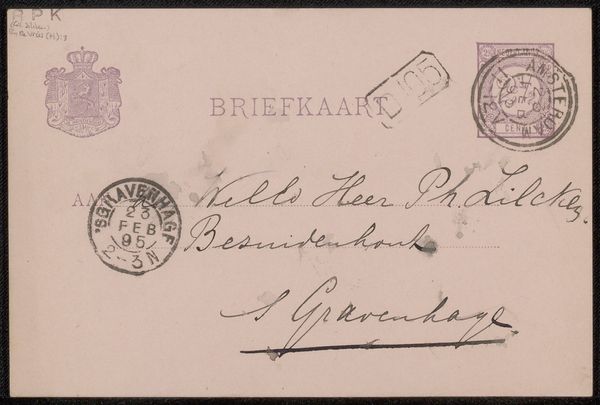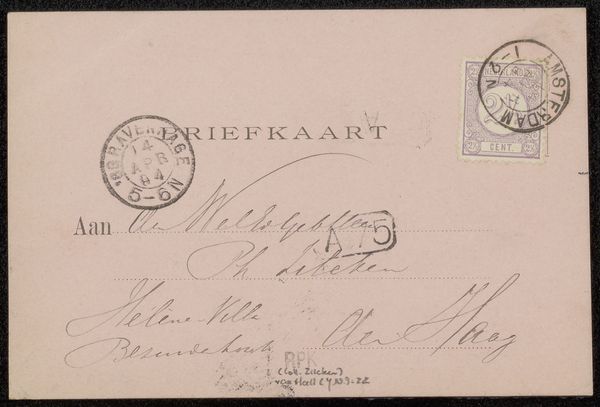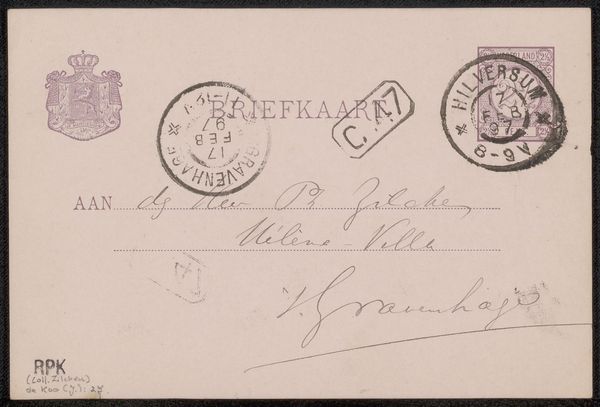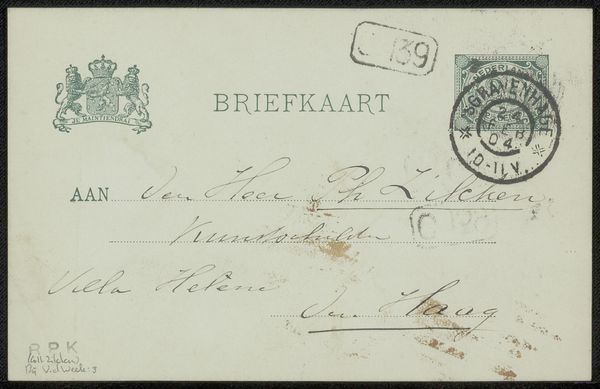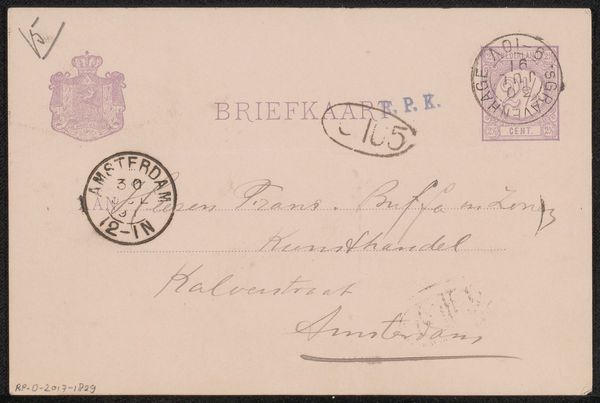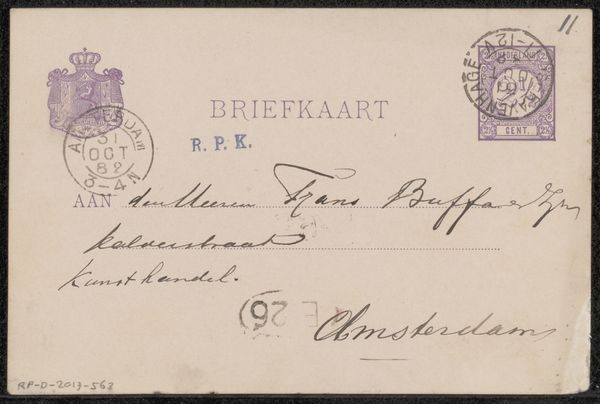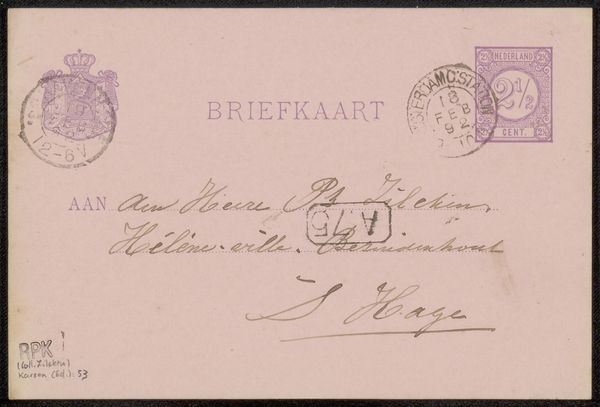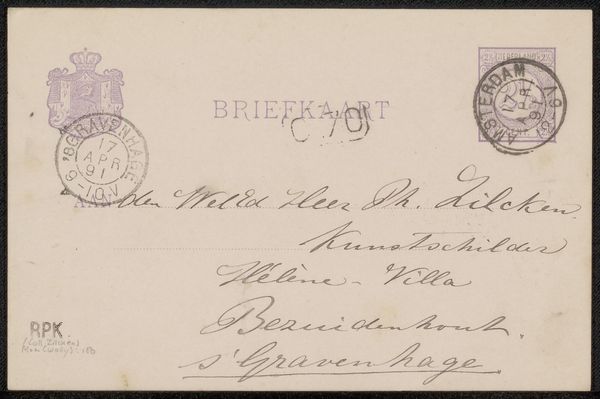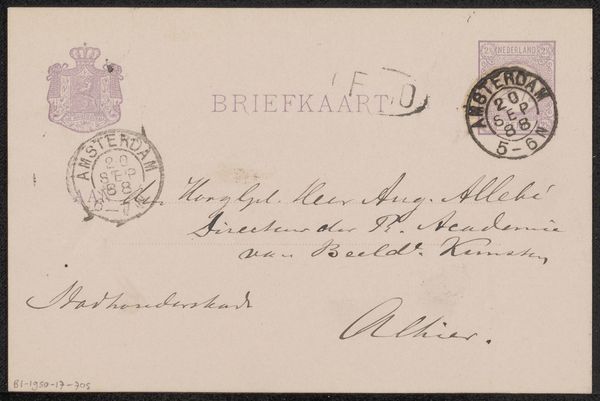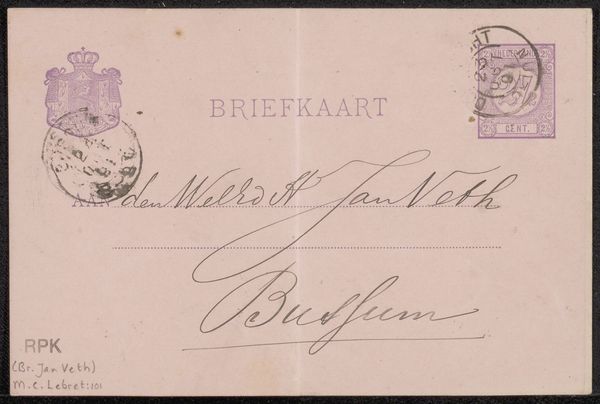
#
aged paper
#
script typography
#
hand-lettering
#
old engraving style
#
hand drawn type
#
hand lettering
#
hand-drawn typeface
#
fading type
#
thick font
#
golden font
Copyright: Rijks Museum: Open Domain
This briefkaart was sent to Jan Veth in 1890 by M.C. Lebret. It's made from paper, a very thin, lightweight material that allows for economical communication. Though humble, it’s actually the result of several complex processes that link it to wider social issues of labor, politics, and consumption. Consider the paper-making process. Trees would have been harvested, pulped, processed, and pressed into sheets, representing many different laborers and the consumption of resources. Then there’s the printing of the briefkaart itself, likely a mechanized process involving skilled technicians. And let's not forget the postal system; an important part of a complex network that relies on many workers to collect, sort, transport, and deliver correspondence. Even the act of writing on the card reflects a certain level of literacy and education, not universally available at the time. The briefkaart, therefore, embodies far more than just a message, but a set of relationships that challenge traditional distinctions between art, craft, and everyday life.
Comments
No comments
Be the first to comment and join the conversation on the ultimate creative platform.

